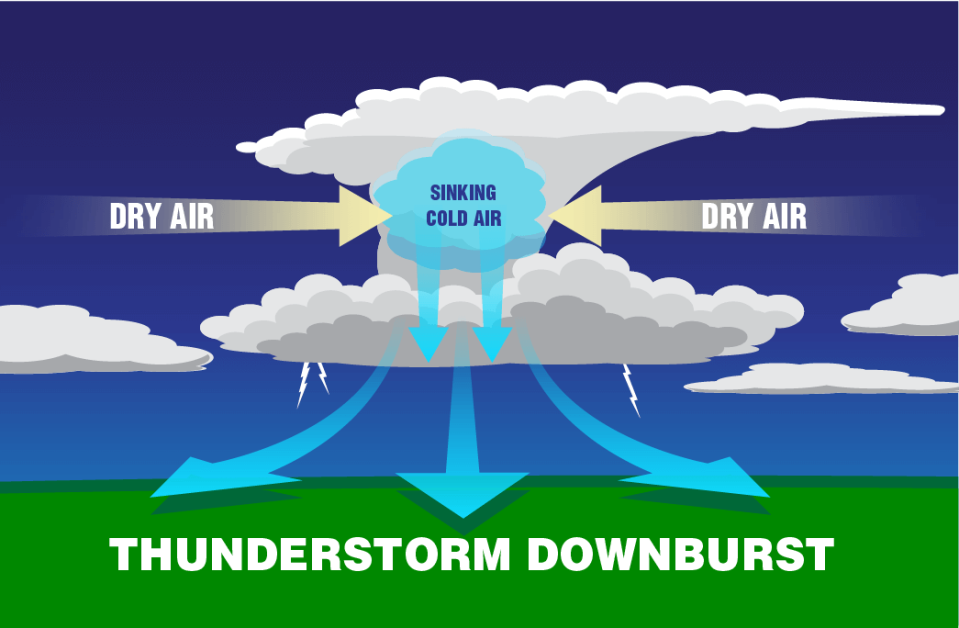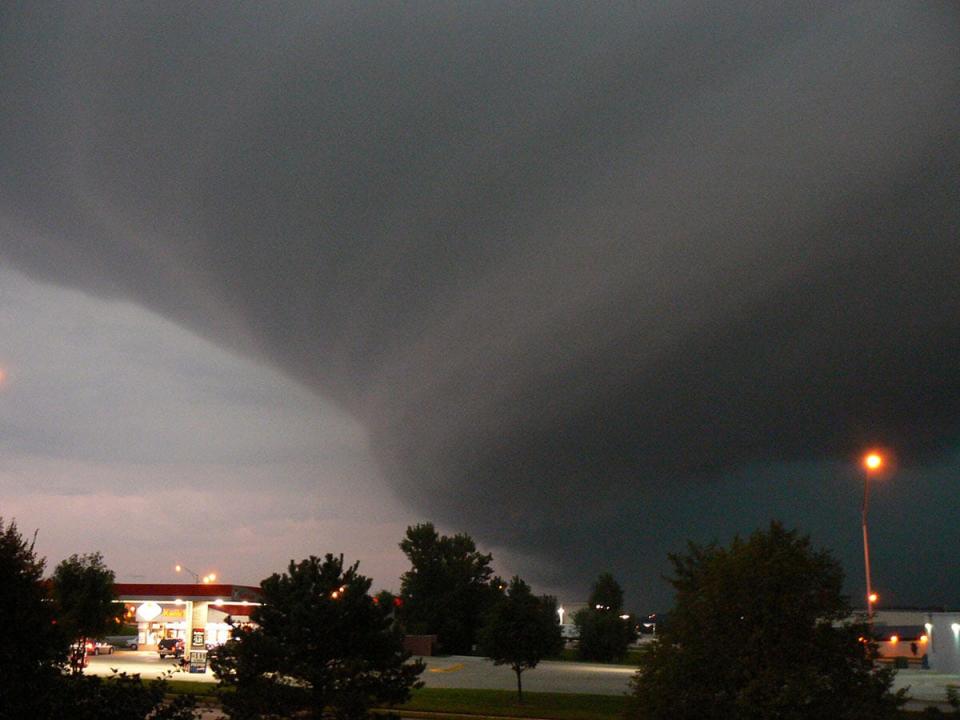Derechos are 'rare' and 'violent' storms that span hundreds of miles. Here's what to know
Severe weather expected to sweep across the South Wednesday had meteorologists warning about the possibility of a “rare” and violent type of thunderstorm called a derecho.
The outbreak of severe weather has already impacted Abbeville, Alabama, according to USA Today, where emergency management officials confirmed a tornado caused damage in the area Wednesday morning.
The National Weather Service describes derechos as a very “long lived and damaging” thunderstorm with wind gusts of at least 58 miles per hour and a swath of wind damage that extends for at least 240 miles.
NHC monitoring tropical waves in Gulf National Hurricane Center monitoring 4 tropical waves, including 2 in Caribbean
Here’s what you should know about derecho storms.
What is a derecho storm?
Derecho storms, pronounced “deh-REY-cho” is a widespread and long-lived wind storms associated with rapidly moving showers or thunderstorms frequently referred to as bow echoes, squall lines or quasi-linear convective systems, according to the National Oceanic and Atmospheric Administration (NOAA).
What causes derechos?

Derechos begin with downbursts, a common type of wind damage produced by a thunderstorm, according to NOAA. These are formed when wet air in a thunderstorm meets the surrounding drier air, causing the water molecules in the air to evaporate. The cooler air is dense, causing it to quickly sink toward the ground and create downbursts.
Storms are classified as derechos when conditions for downbursts occur over a wide enough area that straight-line wind damage stretches over a swath of 240 miles.
How powerful are derecho storms?
Derecho winds must be at least 58 mph or greater, according to NOAA. Wind speeds are typically under 100 mph but gusts can reach as high as 130 mph — on par with strong EFT tornadoes.
Severe weather: Unusual severe weather outbreak underway in South: Tornadoes, hail, high winds in forecast
Why is a storm called a derecho?
Dr. Gustavus Hinrichs, a physics professor at the University of Iowa, created the term “derecho” when he wrote about the phenomenon in a paper published in the American Meteorological Journal in 1888. According to NOAA, “derecho” is a Spanish word that means “direct” or “straight ahead.”
The term fell out of usage for nearly a hundred years before severe weather meteorologists started using the term again in the mid-1980s.
How can you recognize a derecho storm?

The appearance of derecho storms can vary, so there isn’t a clear way for most people to accurately identify a derecho storm by sight alone. NOAA says that many derechos are preceded by “shelf” clouds and tend to appear darker than most other storms.
How do you stay safe in a derecho?
Staying safe during a derecho storm is as simple as staying inside until the storm passes. If you find yourself outside during a derecho, the best plan of action is to find shelter, if possible.
The biggest dangers derecho storms present are falling debris and cloud-to-ground lightning. NOAA suggests lying flat and face-down on low ground, protecting the back of your head with your arms, and avoiding trees or other sources that could cause wind debris.
Does Florida have derecho storms?
Derechos are a relatively rare event, as they only tend to occur from once a year to once every four years across portions of the eastern two-thirds of the U.S., according to the National Weather Service.
Derechos tend to occur along the “corn belt,” from the upper Mississippi Valley into the Ohio River, and from the southern Plains into the mid-Mississippi Valley. Much of Florida falls outside of this range, but the Panhandle falls into an area that averages one derecho every four years, according to NOAA.
The 1993 ‘superstorm’ derecho known as the ‘Storm of the Century’
A “superstorm” derecho named the “Storm of the Century” hit Florida, southeast Georgia and Cuba in March 1993, resulting in seven deaths and 79 injuries in Florida and 10 deaths in Cuba.
According to NOAA, wind gusts were measured reaching a maximum of 96 mph in the Tampa Bay area, while supercells and small-scale bowing segments produced tornadoes and tornado-like winds that resulted in damage throughout the northern half of Florida, with some areas receiving F2-like damage.
This article originally appeared on Pensacola News Journal: Derecho storm could hit South US. What to know about massive storms

